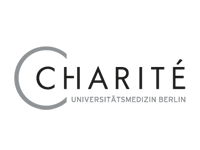Your selection
Research / 18.06.2020
Jan Philipp Junker receives Helmholtz AI grant

MDC researcher Jan Philipp Junker and his collaborator Maria Colomé-Tatché at Helmholtz Center Munich have received a €200,000 grant to improve big data processing to better understand how gene networks are wired together during development and disease.
Scientists generally understand how stem cells transform into a specialized heart, brain or muscle cell. But now they want more specifics: the precise, step-by-step instructions that drive cell fate and function. Understanding the exact flow of genes turning on or off other genes, called “gene regulatory networks,” throughout the normal cell differentiation process could also help clarify what goes wrong in diseases such as cancer and heart disease.
Researchers at the Max Delbrück Center for Molecular Medicine in the Helmholtz Association (MDC) and Helmholtz Center Munich will use a Helmholtz Artificial Intelligence Grant to try to decode these complex networks by combining advanced experimental, sequencing and machine learning tools. “Suddenly, with recent technological developments, this goal that seemed to be almost unreachable, is within reach,” says Dr. Jan Philipp Junker, who heads the Quantitative Developmental Biology Lab at MDC’s Berlin Institute for Medical Systems Biology.
Ambitious collaboration
The Helmholtz AI Grant program supports “high-risk, high-reward” research over a relatively short timeframe of three years, encouraging investigators to try out novel ideas and “fail fast” if need be and continue innovating. “This doesn’t mean this should be completely reckless research and that we are ready to burn the money entirely,” Junker says. “It’s a calculated risk.”
The €200,000 grant will be shared equally by Junker and his collaborator, Dr. Maria Colomé-Tatché, a group leader at the Institute of Computational Biology at Helmholtz Center Munich, to support a post doc and a Ph.D. student conducting experiments, developing computational tools and analyzing data. The two centers are required to provide matching funds.
Really big data
With the recent advent of single-cell sequencing, scientists are able to see which genes are active in individual cells as they progress from undifferentiated cells into specific cell types, such as a muscle cell or brain cell. But so far, computational tools have not successfully pieced together how genes specifically influence each other.
“In principle, we can see what happens, what genes go on and what genes go off as a cell differentiates, but understanding which gene turns on which other genes, how these activation networks work in different cell types, that is still basically an open question,” Junker explains. Attacking this question requires colossal amounts of data – sequencing tens of thousands of active genes, in tens of thousands of individual cells. One data set includes at least 20,000 dimensions. That’s where AI and machine learning can help, sifting through all that data and finding meaningful patterns, which in this case, are the gene regulatory networks.
It also requires aligning the time scales of multiple data streams so they can be effectively analyzed and yield accurate insights. The team is working to improve this alignment. Notably, they have adapted a method called SLAM-seq to label freshly transcribed RNA molecules, which indicate newly activated genes. Identifying old RNA present in a cell versus new RNA will help clarify the order of gene activations. Combining this information with data on DNA accessibility should help make network reconstructions more accurate.
Future applications
Junker and his team will initially seek to reconstruct gene networks in normal embryonic development of zebrafish, a model organism for vertebrates, including humans. Once the computational approach is verified, they can use it to study disease development in humans, which can open doors to new treatments.
“In the more distant future,” Junker says, “when we have a complete network for cell differentiation for an organ, then we could go to the drawing board and decide which arrow or node we want to attack with a therapy.”
Text: Laura Petersen
https://www.mdc-berlin.de/news/press/junker_helmholtz-ai-grant
Overview News
News Buch Berlin
From cell biology to CRISPR/Cas – new knowledge for schools
The Life Science Learning Lab at the Berlin-Buch research campus offers both school students and teachers the opportunity to immerse themselves in science. This year, the facility celebrates its 25th ...
more ...ERC grants Berlin scientists € 2.5 million each
Neuroscientists Gary Lewin and James Poulet at the Max Delbrück Center for Molecular Medicine have won highly coveted and competitive ERC Advanced Grants to study pain and the neural mechanisms that u...
more ...The Protein Expert
Prof. Dr. Fan Liu from the Leibniz-Forschungsinstitut für Molekulare Pharmakologie (FMP) has recently received several awards for her contributions to the field of cross-linking mass spectrometry.
more ...Events Buch Berlin
06.05.2024, 09:00
Realtime PCR und digital PCR Kurs
Der RealTime PCR und Digital PCR Kurs richtet sich an erfahrene PCR Anwender*innen und an Einsteiger*innen. Wichtige PCR Grundlagen werden erörtert, bevor die RealTime PCR besprochen und Genexpression...
more ...22.06.2024, 16:00
Lange Nacht der Wissenschaften 2024
Save the date!
more ...







